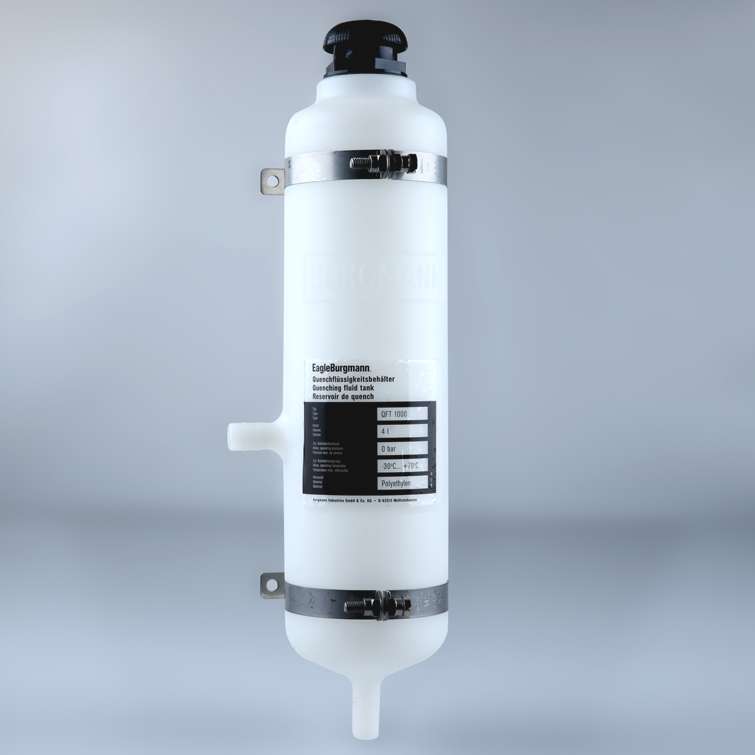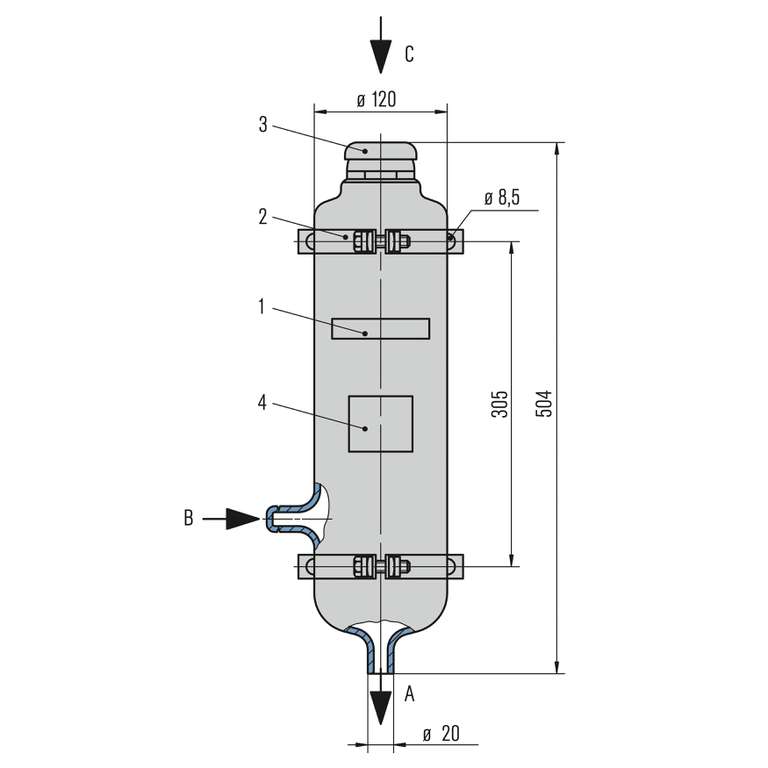
Cartex Single seals
April 13, 2019
TS1000
April 13, 2019QFT1000
Features
Quench fluid supply systems are used to supply single or tandem mechanical seals. They act as a convenient fluid reservoir. The exchange of fluid takes place by the thermosiphon principle or by forced circulation, e.g. with a pumping screw. The QFT1000 is made of transparent polyethylene, complete with clips made of stainless steel. The QFT1000 is resistant to water, glycerine, glycols and methanol; not resistant to mineral oils and toluene.
Supply of mechanical seal based on API 682 / ISO 21049, Plan 51.
Advantages
- Excellent value for money
- Transparent polyethylene: fluid level is read off directly on the quench fluid tank
- Resistant to a wide range of quench media
- Quickly and easily installed
- Combined filling and ventilation filter in the quench fluid tank for reliable operation
Recommended applications
- Chemical industry
- Food and beverage industry
- Pharmaceutical industry
Functional description
Quench fluid systems are employed:
- to absorb leakage
- to monitor the leakage rate (e.g. through periodic reading of the level in the tank)
- to lubricate and to cool the outboard mechanical seal in a tandem arrangement
- to prevent icing
- to protect against dry running
- to stabilize the lubricating film
- to exclude air from the media in order to prevent a reaction with oxygen in the air
]Notes
Install the quench fluid tank approx. 1 … 2 m (3.3 … 6.6 ft) above the mechanical seal. Install connection pipes to the mechanical seal with low flow resistance. Pipes must vent automatically in the direction of the tank. It is imperative that air pockets are prevented. The minimum filling level must always be above the connection socket at the side (in the case of the thermosiphon principle). Quench fluid systems can be operated in two different modes.



